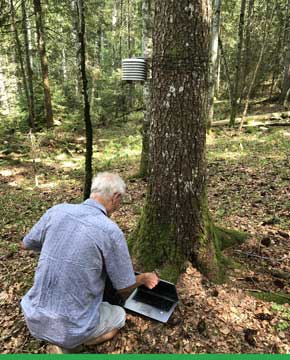
Environment and climate change
The members of this research group develop multidisciplinary research in geography, geomatics, archaeology, geosciences and climatology, covering large chronological and spatial scales. Research is focused on environmentally vulnerable geographic areas, to probe global change, human impacts and environmental hazards.
Climate change in a “cold” environment
1.Spitsberg
The Arctic is a historical research ground for UMR ThéMA, which is part of the GDR AREES "Arctic: Issues for the Environment and Societies", which is currently being renewed. Research carried in the Arctic since the 1970s is based at Svalbard, on the west coast of Spitsbergen (78 ° N), where France has a scientific base (IPEV). This work focuses on the relationships between geophysical processes and contemporary climate change, which significantly affects polar regions. The aim is to measure the impact of climate change on the dynamics of the cryosphere. This includes:
- long-term monitoring of the Austre Lovén glacier, referenced in the international observatory WGMS (World Glacier Monitoring Service).
- the monitoring of periglacial areas and more specifically of hydrological and geomorphological processes. "Source-to-sink" sediment transfers are a particular focus of this research because of the consequences, both on land and at sea.
2. The Jura Arc
Research is being carried out in the Parc du Haut Jura, under the auspices of the Zone Atelier Arc Jurassien (ZAAJ). This research looks at the dynamics of the snowpack (water equivalent, spatial analysis) in a mid-altitude mountain context as well as the local climatology (depending on local specificities). This work is carried out in collaboration with Météo France and uses a downscaling approach based on a network of sensors specific to forest cover in parallel with existing Météo France stations.
This work is based on frequent field surveys and the use of methods specific to geophysics (LiDAR, terrestrial RADAR, tomography) coupled with geomatics and image processing (imagery, drone, remote sensing, spatial analysis).
A third research theme couples methods developed at ThéMA (landscape analysis, visibility) and image processing methods (monoplotting) applied to the reconstruction of mountain landscape dynamics. This work is based on the use of ancient imagery and iconography to characterize and quantify the glacial changes during and since the Little Ice Age.
Landscape dynamics of coastal environments during the Holocene
This research looks at past climate change, human impacts and the evolution of coastal areas during the Holocene. This multidisciplinary and multi-scalar research is built upon a national and international network in the Mediterranean and the Near and Middle East which aims to explore vulnerability (human, environmental) over a large geographical area and over the long term. ThéMA is currently conducting research in Croatia, Malta, Cyprus, Egypt and Iran.



